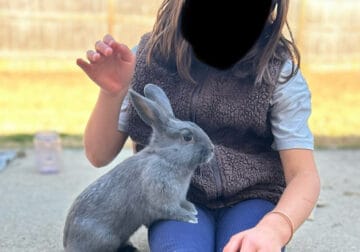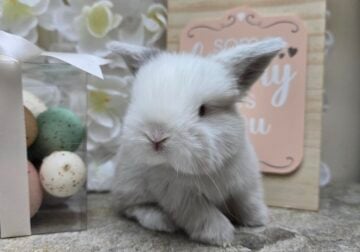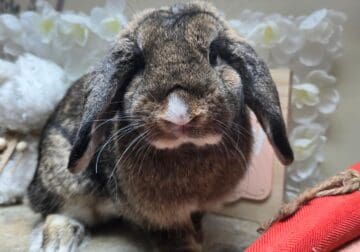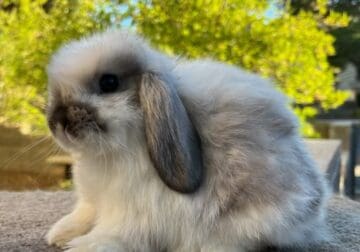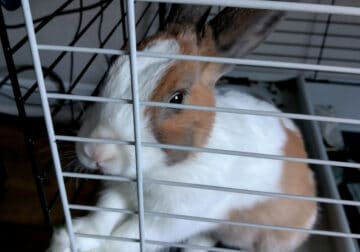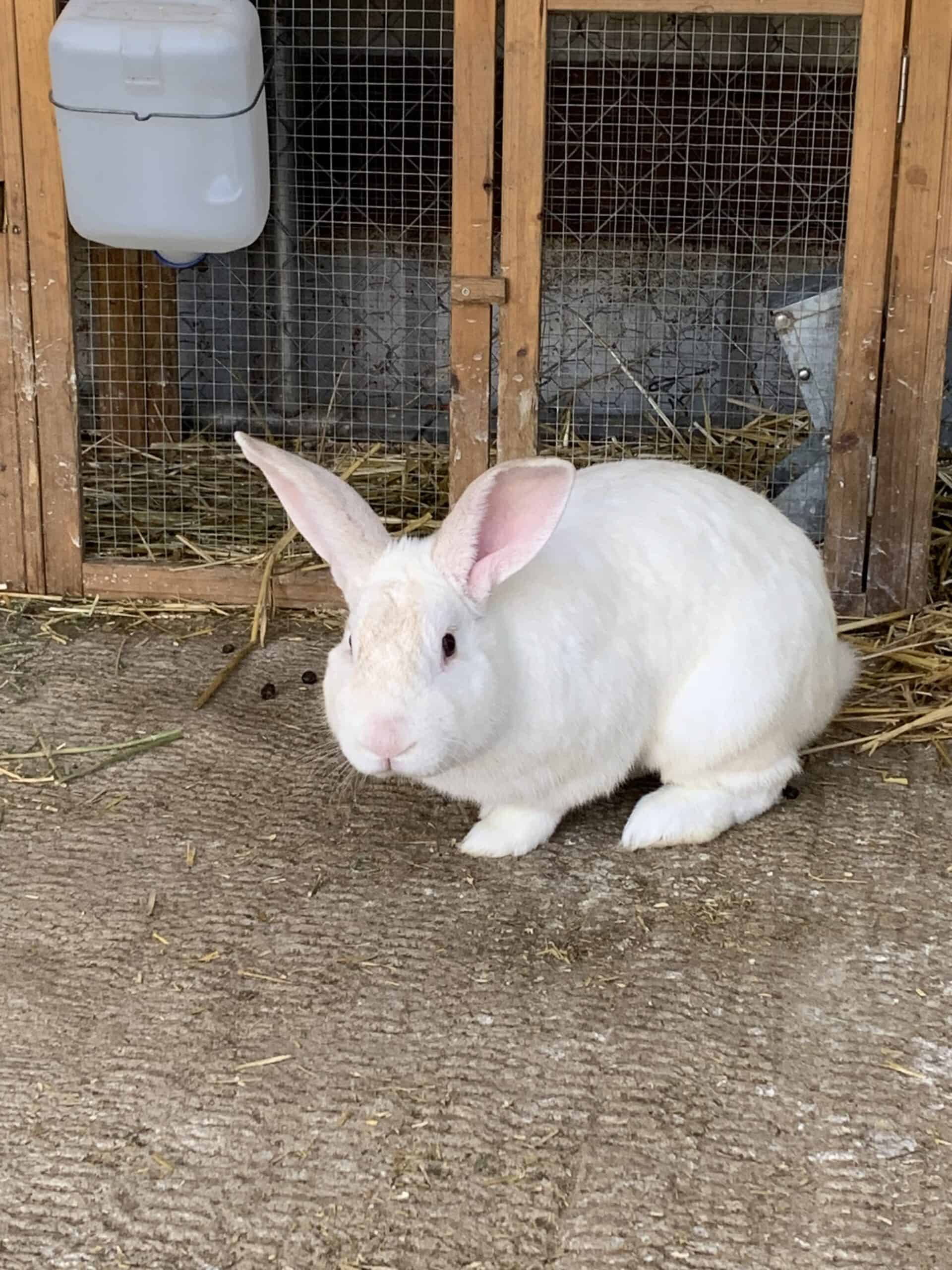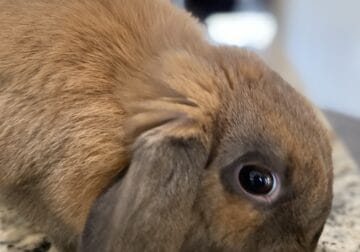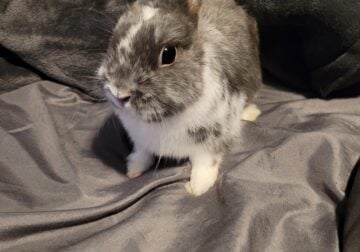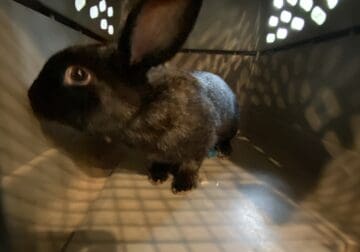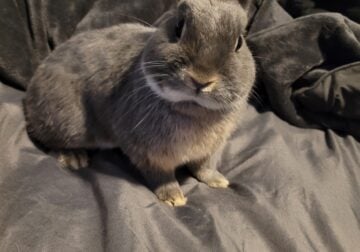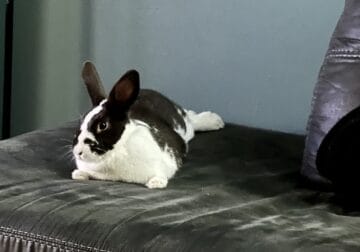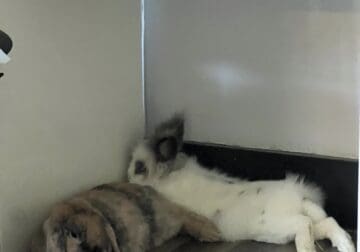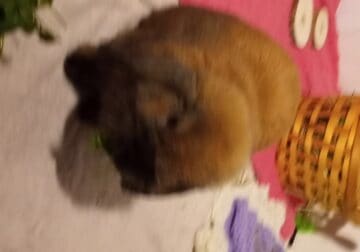Find local results using radius search here.
Bunnies for Adoption: An Ideal Pet with Special Needs
Soft, small, and quiet, bunnies seem like the optimal pet. Furthermore, you can adopt a bunny many times without incurring a lot of costs. However, rabbits are not as adaptable to moving into your home as a dog and cat. While they can make amazing pets for children and adults, alike, rabbits require specialized care and suitable habitats to be happy and healthy pets.
Rabbits for Adoption Near Me
Appearance
Rabbits are generally small pets, but the breeds as a whole fit into four size categories.
- Small – two to six pounds
- Medium – six to nine pounds
- Large – nine to eleven pounds
- Giant – over 12 pounds
Most rabbits are between 10 and 20 inches long. They have a dual coat of soft fur. They also have long, powerful hind limbs responsible for a hopping gait and a top speed of 35 to 45 miles per hour. The characteristic that distinguishes rabbits from rodents is the set of four upper incisors, one pair growing behind the other. Rodents only have two upper incisor teeth. Rabbits tend to have long upright ears, although they flop in some breeds by intention. Domesticated rabbits have developed colors way beyond the agouti coat and brown eyes of wild bunnies. There are more than 20 colors and variations possible in pet rabbits as of the 2020s.
- White – solid, points, or with spots
- Tortoiseshell
- Red
- Brown
- Sable
- Blue
- Cream
- Black
Breeds
Rabbits come in a variety of sizes and shapes. Although you cannot always be as choosy about your rabbit’s type as if you were buying one through a breeder, there are still plenty of opportunities to be selective. The most popular breeds tend to also be great for kids.
- Lops have long floppy ears – Holland, English, American Fuzzy, or French
- Flemish Giant – laid-back and calm, 16 pounds or heavier
- Continental Giant – largest rabbit breed (18 to 22 pounds); crave human interaction
- American Rabbit – in-demand but rare; 10 to 12 pounds; pleasant
- Beveren – energetic, curious, but docile; 12 pounds
- Dutch – white and a second color combo; compact, 4 pounds; fun to show
- Californian – 10 to 12 pounds; white with colored points (nose, ears, and feet)
- Mini Rex – not always as docile as other breeds; velvety; 4.5 pounds
- Lionhead – just under 4 pounds; characteristic mane of longer hair around the neck; charming personality
Also common among bunnies for adoption are mixed breeds. Another breed designation you will frequently see is the bunny rabbit. However, this is a generic term rather than a specific breed. Chances are the exact breed is mixed or not known for certain.
What to Look for in Pet Bunnies
When you find “bunnies for adoption near me,” look for the same qualities you would for any other potential pet.
- Rabbits have characteristically luxurious fur with a healthy sheen – hair loss in a red flag; naked babies are way too young to go home with you
- Bright and alert
- Active – rabbits do not have much downtime, especially in the presence of visitors
- Should appear well-fed; not all rabbit breeds look plump, but a prospective bunny should not look underweight
- Only choose a rabbit from a litter where all kits look healthy
- Pick from well-socialized bunnies – these make the best pets; a delay in handling baby rabbits will lead to adults that are never very comfortable with people
Rabbit Care
Bunnies for free require the same amenities as those you purchase at a premium. By the time all is said and done, your bunny may not seem so free.
Habitat
Sometimes, free rabbits come with a hutch and a sample of food. Whether provided or not, you need to ensure your rabbit lives in a suitable environment. Even if your rabbit mostly hops around your home, she needs a separate area where she can hide or enjoy time to herself. A rabbitat needs to be at least twice the length of your rabbit. A hutch is convenient for most rabbit owners and should be two to three feet for small bunnies and three to four feet for larger ones. The bottom needs to be a solid panel across at least half of it to avoid the development of sores. Materials you can consider are plexiglass, stainless steel, and plastic as they are easy to keep clean. A mesh bottom will help keep droppings and other waste away from your bunny. Appropriate bedding includes paper and towels if your pet is not prone to eating them. Many people successfully litter train their rabbits.
Playpens vs Hutches
If you house your rabbit outdoors or have a litter-trained bunny, a pet playpen is an excellent alternative to a hutch. It will give your rabbit more room. If your rabbit is not litter-trained, you can still use a pen indoors, but bedding and daily cleaning become more of an effort. Make sure to use plenty of cloth rags or blankets and paper if your pen is inside to help your rabbit feel secure. You do not want to expose your bunny to slippery or excessively hard flooring.
Sanitation
It is crucial to keep your rabbit’s habitat clean to prevent diseases. Pick up solid waste and soiled bedding multiple times a day. You will need to implement a deep-cleaning session every few days or more often depending on how fastidious your rabbit is. Litter training, of course, makes it much easier to keep the pen or hutch sanitary. Use warm soapy water on surfaces, avoiding harsh chemicals.
Grooming
Part of your interaction with your pet rabbit should include grooming. While you should avoid bathing your bunny except in extreme cases, you need to brush him. You should brush a short-haired rabbit twice a week and a long-haired one as often as every day. While brushing your bunny, it is a good idea to check his nails. If they are peeking out beyond the hair on the toes, they need to be trimmed. If you have not yet learned to trim your rabbit’s nails, a veterinarian or technician can do it for you. Rabbits with exceptionally short (Rex) or long hair on their feet will require you to adjust how you assess the necessity for clipping.
Food
When you adopt a bunny, its habitat and diet are the most important factor in maintaining health. The diet should consist of pellets that have been balanced for bunnies, hay to provide roughage, and greens. Rabbits usually need about 1/4 to 3/4 a cup of pellets for every 10 pounds of body weight. Babies can eat alfalfa hay, but adults should avoid hay that has high levels of calcium. Timothy is the most common hay for rabbits, but other options include orchard or meadow grass. Hay provides crucial roughage that can help prevent the build-up of hairballs. You should include greens such as leafy lettuces, escarole, and watercress, to name a few. Veggies with high calcium levels (broccoli, spinach) are to be avoided. Your veterinarian may recommend a supplement like Laxatone to further reduce the risks associated with hairballs. Laxatone administration is typically a few times a week.
Toys
Do not laugh if you acquire a couple of free rabbits and they come with toys. Toys are vital to prevent boredom and provide a chewing outlet for bunnies. Rabbit toys come in a variety of forms:
- Flavored sticks – e.g., apple, for gnawing
- Food balls – to provide mental stimulation and satisfy the need to gnaw
- Fir cones – mental enrichment, gnawing
- Foraging mats – make feeding more interesting
- Tubes – enrich your rabbit’s environment; bunnies should be able to fit inside as well as chew them
Exercise
Even if your rabbit has a large pen in which to run, you should take her out of her enclosure daily. Your rabbit will thrive with daily interaction with you and your family. If you cannot let your rabbit out of its pen every day, exercise runs can prove very beneficial. It is impossible to put a time limit on how much exercise rabbits need because they are equipped for explosive but short bursts of activity. If you have owned cats, rabbits require a similar approach. Some bunnies for free are neither used to space nor exercise. You may have to encourage play which you can do using toys or tools that require effort before your rabbit can feed.
Companionship
While rabbits often do better with a companion of the same species, you must exercise caution. Rabbits that have not properly bonded will fight ferociously. If you cannot bond your bunny to another, you must be even more diligent in providing sufficient company and interaction for it.

